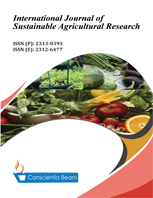Achieving sustainable agriculture by application of saline water irrigation
DOI:
https://doi.org/10.18488/ijsar.v12i2.4167Abstract
The objective of this study is to investigate the feasibility of saline water irrigation as a potential strategy to mitigate water scarcity in agriculture while promoting sustainable agricultural practices. This study evaluates the efficacy of saline water in irrigation, focusing on its effects on crop yields, soil health, and overall agricultural productivity. The study utilizes a systematic review of current literature. Field experiments assessed the performance of various salt-tolerant crops under saline water irrigation. Soil and water quality parameters were assessed to evaluate the long-term impacts on soil salinity and fertility. Case studies from regions utilizing saline irrigation were analyzed to identify effective practices and mitigation strategies. The findings indicate that appropriate crop selection, soil management practices, and irrigation strategies enable the effective use of saline water for irrigation, maintaining soil health. Improved irrigation methods, including drip irrigation, reduce salt buildup in the root zone. The study highlights the potential of saline water irrigation to mitigate water scarcity, decrease reliance on freshwater resources, and promote sustainable agricultural practices. The adoption of this practice can enhance arable land in saline-affected areas, thereby contributing to food security and environmental resilience.

